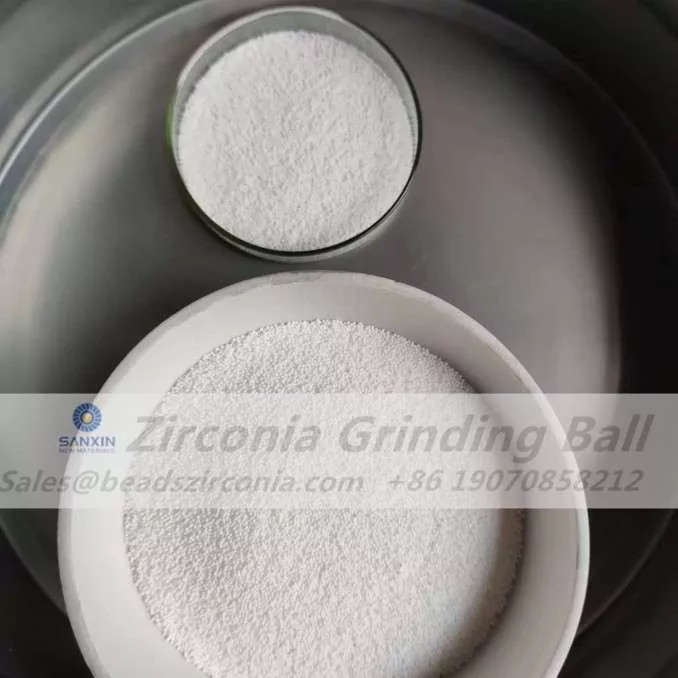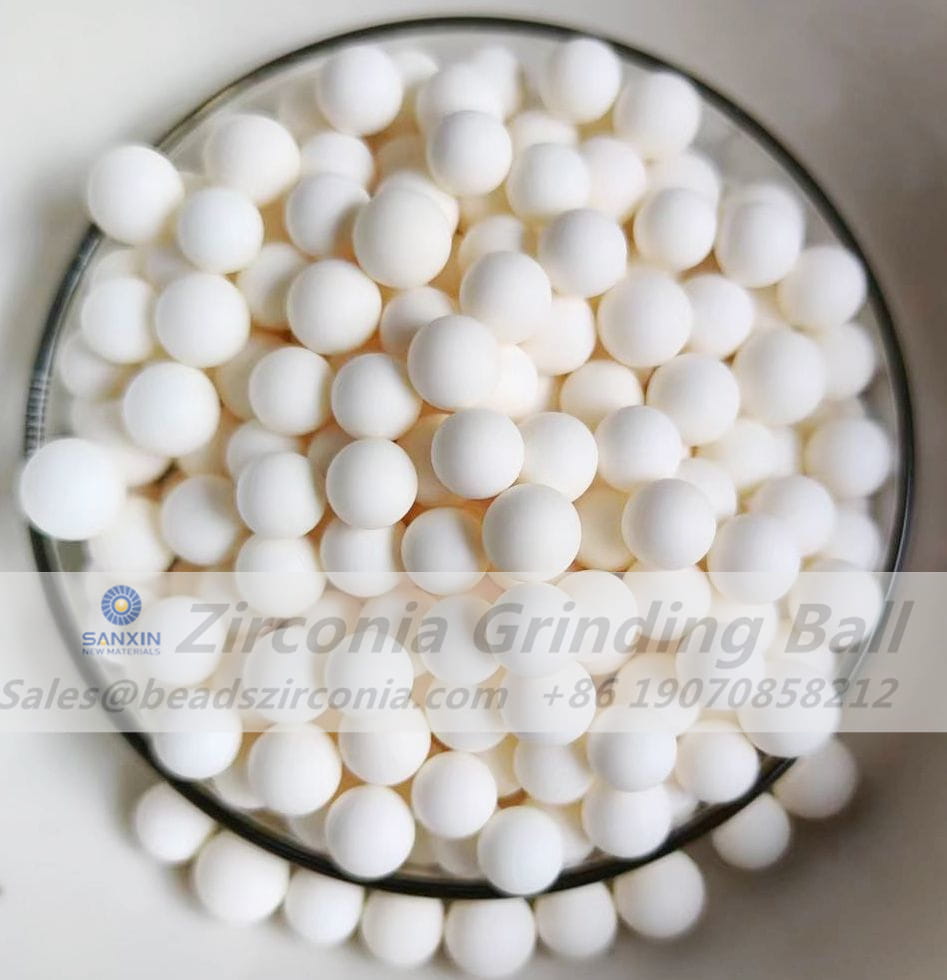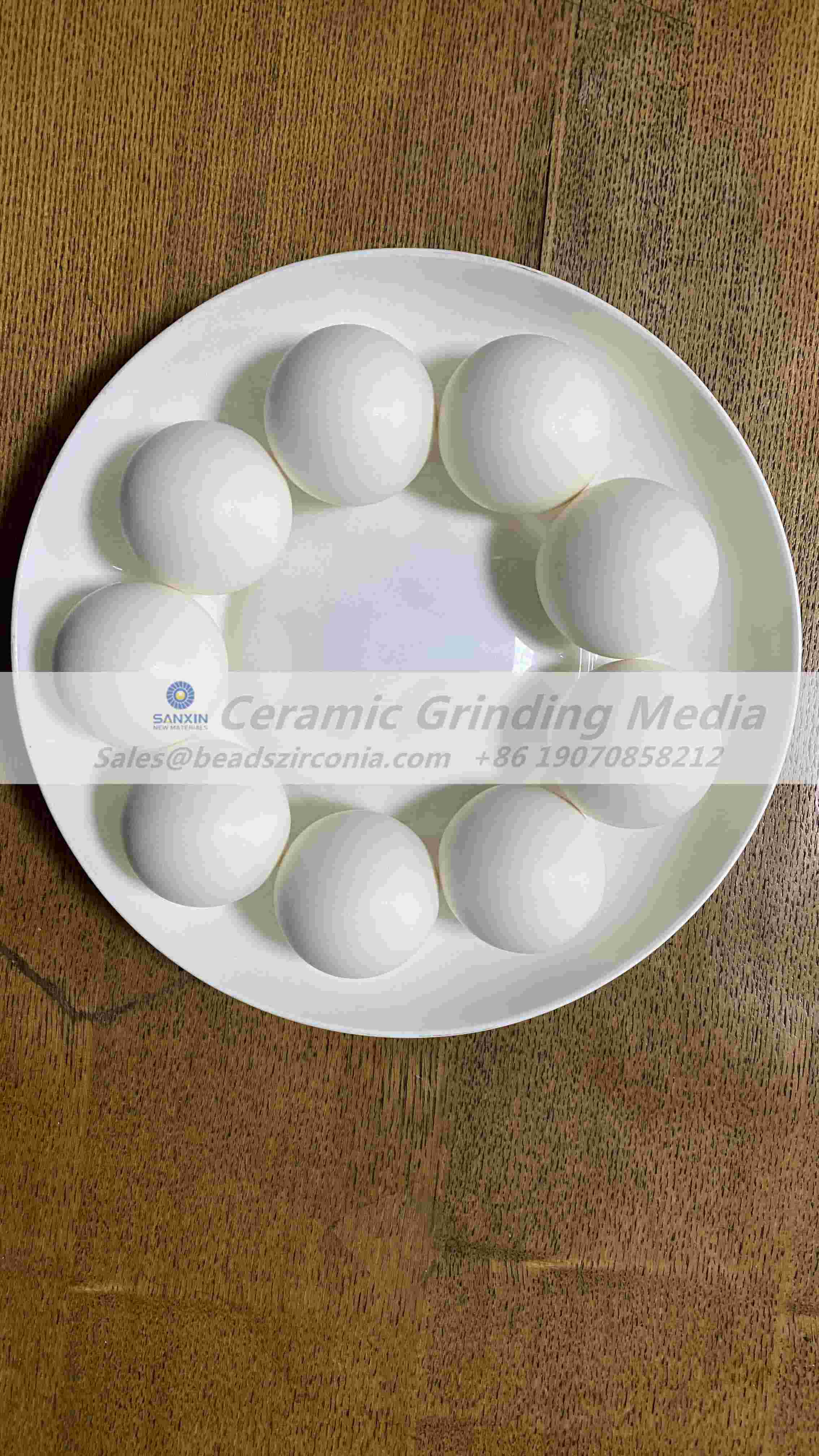
The high-purity alumina ceramic balls market (purity ≥99.5%) has emerged as a critical sector within advanced materials, driven by exponential growth in semiconductor manufacturing, lithium-ion batteries, and biopharmaceuticals. This report provides an in-depth analysis of the market, spanning from supply chain dynamics to technological breakthroughs, regional competition, and future growth projections. Key findings reveal a market projected to reach $32 billion by 2030, with a compound annual growth rate (CAGR) of 18.5% from 2024, fueled by demand in 3D NAND fabrication, solid-state battery development, and mRNA vaccine production.
In semiconductor chemical mechanical planarization (CMP), high-purity alumina ceramic balls (≥99.99%) serve as essential polishing media, with spherical tolerance requirements as tight as ±0.1μm to ensure wafer surface roughness below 0.5nm. TSMC’s 7nm production line in Nanjing consumes approximately 5,000 pieces of 30μm alumina microspheres daily, while Samsung’s Xi’an facility expansion to 150,000 12-inch wafers per month has driven a 30% capacity increase among northwest Chinese suppliers.
The global semiconductor CMP consumables market reached $7.8 billion in 2024, with alumina ceramic balls accounting for 34%. As EUV lithography becomes mainstream, demand for 4N8 (99.998%) purity balls is growing at 22% annually. Key technological challenges include:
Nanoscale contamination control: AMAT’s Endura CMP systems require metal ion leaching ≤1ppb, met by Sumitomo Chemical’s sol-gel derived hollow alumina microspheres with Fe/Na impurities <0.5ppb.
Polishing uniformity: Applied Materials’ three-layer composite structure (outer 99.99% Al₂O₃, inner 99.5% Al₂O₃) reduces 300mm wafer thickness deviation to ±1%.
CATL’s Yibin plant utilizes alumina ceramic balls in NCM811 cathode material grinding, where 0.3mm balls increase sanding efficiency by 40% and reduce energy consumption by 25% compared to zirconia media. With global power battery capacity reaching 1.8 TWh in 2024, the battery materials processing segment for alumina balls exceeded $5.2 billion, with Jiangxi Province (35% of global lithium mica capacity) experiencing 45% annual procurement growth.
Key technological shifts include:
Solid-state battery compatibility: Toyota’s 2025 sulfide solid-state battery requires cathode slurry grinding media with wear rate <0.01mg/L, met by BASF’s Al₂O₃-ZrO₂ composite balls reducing corrosion by 70%.
Ultra-fine particle control: BYD’s "two-step grinding" process (1mm roughing + 0.1mm finishing) achieves D50=2μm for silicon-based anodes, boosting energy density by 15% but increasing ball consumption by 2.3x.
mRNA vaccine production relies on 0.2mm alumina ceramic balls for lipid nanoparticle (LNP) dispersion. Moderna’s mRNA-1273 line uses Germany’s Frewitt sterile sand mills with 99.99% alumina balls to ensure LNP particle size distribution of 80-120nm and endotoxin levels <0.1EU/mL. The global biopharmaceutical alumina ball market reached $2.8 billion in 2024, with Suzhou (40% of China’s biopharmaceutical capacity) accounting for 32% of consumable costs.
Regulatory benchmarks include:
Dynamic release testing: FDA requires ≤10ppm leachables in PBS buffer over 72 hours; NGK’s BIOSTAL® series achieves Al³+ release of just 0.5ppm.
Single-use trends: AstraZeneca’s continuous production platform uses disposable alumina ball assemblies, increasing costs by 18% but eliminating cross-contamination risks, driving 65% growth in pre-sterilized products.
In petroleum FCC units, 99.5% alumina ceramic balls as catalyst supports withstand 800℃ and 20MPa, extending catalyst life to 18 months in ExxonMobil’s Singapore refinery. The global catalytic alumina ball market reached $3.6 billion in 2024, with the Middle East leading growth at 8% annually due to increased crude processing.
For optical polishing, LG Display’s OLED lines use 0.5mm alumina balls with ceria slurries to achieve glass surface roughness Ra<1nm. With 8K display adoption, the optical polishing segment is projected to reach $2.4 billion by 2026, with Shenzhen (35% of global LCD capacity) driving 30% annual demand growth.
Global high-purity alumina (≥99.9%) production is dominated by Sumitomo Chemical (32K tons/year), Almatis (28K tons/year), and Shandong Jingxin (15K tons/year). Shanxi’s 2023 environmental restrictions reduced China’s α-Al₂O₃ capacity by 12%, causing SE Asian prices to surge 9% and forcing Samsung SDI to source from Australia at 18% higher costs.
Purity grades and cost structures:

| Purity Level | Production Process | Price ($/kg) | Key Applications | |
99.5% | Bayer process + calcination | Bayer process + calcination | 10-15 | Catalysis, optical polishing |
99.9% | Alcoholysis | Alcoholysis | 30-50 | Lithium batteries, semiconductors (low-end) |
99.99% | Sol-gel method | Sol-gel method | 80-120 | Semiconductor CMP, biopharmaceuticals |
99.998% | Chemical vapor deposition | Chemical vapor deposition | 200-300 | EUV lithography, nuclear reactors |
China controls 60% of global 99.5% alumina capacity but relies on imports for 99.99% products. Daimyo Chemical’s 4N powder, with superior sintering activity and narrow particle size (D50=0.5μm), commands a 3.8x price premium over Chinese equivalents in semiconductor applications.
Alumina ball production involves granulation, forming, and sintering, with sintering accounting for 30-40% of energy costs. European manufacturers use electric pusher kilns (0.8-1.2kWh/kg), while Zibo’s gas tunnel kilns reduce energy to 0.6-0.8kWh/kg via regenerative combustion, cutting fuel costs by 22%.
Innovative sintering technologies:
Microwave sintering: MonoMicron’s 2.45GHz system shortens sintering time for 99.99% alumina from 8 to 2 hours, achieving 500nm grain size and 45% higher fracture toughness, though equipment costs are 2.5x traditional kilns.
Spark plasma sintering (SPS): Sumitomo’s 30MPa+1600℃ SPS process yields >99.9% dense balls with 2.8GPa compressive strength, suitable for aviation bearings but limited to small batches.
North America imports 60% of its alumina balls, with the 2023 Vancouver port strike causing a 45-day delay that increased Texas Instruments’ inventory costs by $12M. Saint-Gobain responded by investing $40M in a Monterrey, Mexico plant, reducing logistics costs by 30%.
Asia-Pacific has developed a "China production-Southeast Asia distribution" network, with the Yiwu-Bangkok rail line cutting transport time from 21 to 7 days and costs by 18%. Singapore’s PSA smart warehouses reduce customs clearance for pharmaceutical-grade balls from 48 to 8 hours, critical for 6-month shelf lives.
The value chain exhibits a classic "smile curve": raw material producers earn 15-20% margins, component manufacturers 30-40%, and solution providers 50-60%. Toshiba Materials commands a 45% price premium by offering integrated "ball+slurry+process" solutions to TSMC.
Chinese firms dominate mid-lower segments with 25-30% gross margins, while Japanese companies exceed 50% in high-purity products. Zibo Shuangying Ceramics improved 毛利率 to 38% by reducing wear rate from 0.1% to 0.05% via nano-composite slurries, entering CATL’s supply chain.
SEMI’s F47-0707 standard requires ≤0.1 particles/m³ (≥0.1μm) for semiconductor-grade balls in Class 100 cleanrooms. TSMC’s Nanjing plant audit includes 128 metrics, such as:
Metal ion leaching: ≤1ppb in 10% nitric acid over 72h
Sphericity: ≤0.5% particles with aspect ratio >1.05
Surface roughness: AFM-measured Ra<2nm
NGK’s "Super Sphere" series passes TSMC’s 7nm certification with sphericity 1.01, while a Chinese manufacturer lost $3.5M in orders due to 1.08 sphericity.
The 2024 revised UN38.3 standard adds:
Electrolyte compatibility: ≤0.1% mass loss in 1mol/L LiPF6/EC+DEC at 85℃ for 500h
Thermal shock resistance: ≤1% cracking after 100 cycles of -40℃ to +125℃
CATL’s supplier evaluation weights these tests at 30%. Lotte Chemical’s Al₂O₃-SiC composite balls show 0.05% weight loss vs. 0.15% for traditional alumina, gaining entry to SK On’s supply chain.
Medical-grade balls must comply with:
Fundamental standards: ISO 10993 biocompatibility (cytotoxicity, sensitization, irritation)
Industry standards: FDA 21 CFR Part 177.2350 (food contact materials)
Process standards: PIC/S GMP Annex 1 (aseptic production)
Special requirements: mRNA vaccines require endotoxins <0.01EU/mL, mycoplasma-negative
CeramTec’s BIOLOX® series maintains sterility after three 121℃ autoclave cycles, holding 68% of Pfizer’s vaccine line share. A Chinese firm missed a $120M Moderna order due to 0.05EU/mL endotoxin levels.
Semiconductor-grade compliance costs account for 18-22% of production, including:
$15K per batch for cleanroom testing
$300K annual ISO 14644-1 maintenance
5% full-item testing (vs. sampling)

But compliant products command 35-40% price premiums in EU/US markets. Singapore’s DSTAR blockchain platform reduces FDA/SEMI clearance from 45 days to 72 hours, cutting Chinese 厂商 compliance costs by 15%.
With 7-8MPa√m fracture toughness (2x alumina), Si₃N₄ balls are replacing alumina in aviation bearings. GE’s LEAP engine uses Ceradyne’s Si₃N₄ balls, extending bearing life from 5,000 to 12,000 hours, driving aviation alumina ball market share from 75% in 2018 to 48% in 2024, with prices falling 12-15% annually.
Material performance comparison:
Materials
| Density (g/cm³) | Hardness (HRA) | Thermal Conductivity (W/m·K) | Service Temperature (℃) | Key Applications | |
Alumina | 3.98 | 88-90 | 30-35 | ≤1200 | Semiconductors, batteries, medical |
Silicon Nitride | 3.20 | 92-93 | 80-100 | ≤1400 | Aviation, automotive bearings |
Zirconia | 6.05 | 85-88 | 2-3 | ≤600 | Wear parts, cutting tools |
Silicon Carbide | 3.21 | 91-93 | 200-400 | ≤1600 | Semiconductor manufacturing, new energy |
In semiconductors, Si₃N₄’s poor chemical compatibility with silicon (etch rate 0.5μm/h) limits its use, but in EV motors, Tesla Model 3 has fully adopted Si₃N₄ balls, reducing alumina demand by 60%.
Colloidal silica slurries with polyurethane pads reduce 300mm wafer CMP costs by 30%. AMAT data shows $1.2/wafer for silica vs. $1.8 for alumina in 28nm logic chips. By 2026, silica is expected to replace 8-10% of alumina demand, primarily in low-end logic and memory chips.
However, in advanced nodes (≤7nm) and 3D NAND with >1,000 layers, alumina remains irreplaceable. TSMC’s 5nm line uses JSR’s alumina-ceria composite system, achieving tungsten polish rates >5,000Å/min with <5nm surface damage—unattainable by pure silica.
SiC ceramic balls are gaining traction in SiC power device grinding for EVs and photovoltaics. BYD Semiconductor’s SiC wafers use 0.5mm SiC balls, tripling material removal rate and halving wear vs. alumina. The global SiC ball market reached $1.2 billion in 2024, growing at 78% annually, primarily replacing alumina in power semiconductors.
But SiC balls cost 2.5x alumina and introduce carbon impurities in battery materials, limiting EV battery penetration to <5%. Tianyue Advanced’s low-oxygen SiC balls (O<0.5%) are under validation by CATL, potentially replacing 10-15% of alumina demand.
Tungsten carbide-cobalt (WC-Co) balls, with HRA 92-94, replace alumina in oil drills and valves. Schlumberger’s PDC bits using WC-Co balls extend drilling life from 200 to 500 hours, but their high density (14-15g/cm³) restricts lightweight applications. By 2024, cermets held 3-5% of alumina’s traditional markets, mainly in oil & gas.
Graphene-reinforced alumina composites from Nanocomp Technologies offer 25% higher wear resistance but cost $200/kg (3.2x traditional), limiting use to military/aerospace for now.
China dominates global production (60% capacity) but supplies <15% of high-purity (≥99.99%) products. Of Zibo’s 200+ manufacturers (35% of national capacity), only 5 produce semiconductor-grade balls. CATL/BYD’s expansions drive 45% annual growth in 99.7% alumina balls, while SMIC/YMTC’s fabs maintain 85% import dependency for semiconductor-grade products.
Japan leads high-end markets, with Sumitomo, NGK, and Toshiba Materials controlling 72% of 99.99% alumina balls. TEL’s CMP equipment standardizes Japanese balls, creating an "equipment-consumable" bundling effect. South Korea specializes in batteries, with Lotte Chemical/Samsung Fine Chemicals supplying 60% of SK On/LG Energy Solution’s needs.
The US CHIPS Act allocates $52 billion to semiconductor 本土化,with 15% earmarked for CMP consumables. Applied Materials’ Austin CMP technology center focuses on 4N8 alumina integration with EUV lithography. Tesla’s Nevada 4680 cell line uses Saint-Gobain balls for silicon anode grinding, achieving D50=1μm.
Canada’s Alumina Limited supplies 30% of global 4N alumina powder. Mexico’s nearshoring attracts Saint-Gobain/CoorsTek, reducing logistics costs by 30% for TI/Micron, though upfront investments reach $40M.
The EU Battery Alliance’s 2030 25% global capacity target drives demand for precision grinding media. CeramTec’s BIOLOX® balls command a 20% price premium at BASF due to EU New Battery Act carbon footprint compliance (≤20kg CO₂/kg). Saint-Gobain’s Hungarian green plant uses 100% renewable power, cutting alumina ball emissions by 45%.
ASML’s EUV lithography systems specify FCT’s 99.998% alumina balls (±0.05μm tolerance, $300/piece), 10x ordinary semiconductor balls. European firms hold 38% of global high-purity alumina patents, 80% of which are invention patents.
The Middle East leverages cheap natural gas for low-cost production. Saudi NEOM’s hydrogen fuel cell project uses local 99.5% alumina balls for hydrogen tank linings, 12-15% cheaper than imports. ADNOC’s refinery expansion procures Zibo’s 99.2% alumina balls (30% cheaper than Europe) for sulfur recovery units.
Africa’s EV battery recycling drives new demand, with Congo’s cobalt-lithium recycling plants using alumina balls for scrap grinding, a $200M market growing at 50% annually. Brunp Recycling’s South Africa plant achieves 99.3% cobalt recovery with 99.5% alumina balls, facing strict local environmental regulations on heavy metal leaching.
Company
| Headquarters | Core Products | Market Strategy | 2024 Market Share | |
Sumitomo | Tokyo | 99.998% Alumina Balls | Equipment bundling, patent pool strategy | 22% |
CoorsTek | Colorado | Aviation-grade Si₃N₄-Al₂O₃ composites | Acquisitions, military market expansion | 18% |
Saint-Gobain | Paris | Wear-resistant battery balls | Joint ventures with automakers | 15% |
CeramTec | Plochingen | Medical-grade bioceramic balls | Focus on ISO 13485, high-end medical | 12% |
Zibo Shuangying | Zibo | 99.7% Battery-grade balls | Cost leadership, CATL supply chain | 8% |
NGK | Nagoya | Semiconductor CMP microspheres | 12-stage grinding, ±0.1μm tolerance | 7% |
Japanese firms maintain high-end dominance through "patent-equipment-material" bundling, while Chinese companies expand in mid-lower segments via cost advantages. Zibo Shuangying broke Korean monopoly in LG Energy Solution’s supply chain by reducing wear rate to 0.05%.
Sol-gel innovations enable sub-50nm alumina powders, with Sumitomo’s NanoAl® series (D50=30nm) yielding <200nm grain size and 4.5MPa√m fracture toughness for 5nm-node CMP. The Shanghai Institute of Ceramics’ hydrothermal method reduces 99.99% alumina powder costs by 40%, though wide particle distribution (D10-D90=20-80nm) hinders mass production.
Chemical vapor deposition (CVD) achieves 4N8 purity but at $200/kg. Materion’s plasma jet improvement triples CVD efficiency, lowering 4N8 ball prices from $300 to $150/piece, accelerating EUV adoption.
Core-shell structures are gaining traction, with KIST’s Al₂O₃-ZrO₂ balls (99.5% core for cost, 99.99% ZrO₂ shell for wear resistance) doubling life in battery grinding. Suzhou NavoTech’s hollow alumina balls (density 2.1g/cm³) reduce mRNA vaccine LNP production energy by 35% while eliminating metal contamination.
Gradient porous designs enhance heat dissipation, with Fraunhofer’s 3D printed balls (40% porosity) increasing thermal conductivity from 30 to 45W/m·K for high-power semiconductor heat sinks. This enables 5G base station applications, projected to reach $500M by 2026.
AI-driven predictive maintenance is standardizing, with Saint-Gobain’s smart factories using ML to analyze 1,200 sensor data points, extending diamond tool life from 8 to 12 hours and reducing downtime by 25%. Jingdezhen Ceramic University’s vision system uses deep learning for micron-level crack detection, 20x faster than manual inspection with 99.8% accuracy.
Digital twin technology optimizes sintering, with Alsim’s software simulating 1600℃ sintering behavior to predict shrinkage/porosity, cutting new product development from 12 to 6 months. Toshiba Materials uses digital twins to boost 99.99% alumina density from 99.5% to 99.9%.
Green sintering reduces carbon footprint, with Shandong Ceramics Institute’s supercritical CO₂ sintering (30MPa+120℃) cutting energy by 40% and CO₂ emissions by 90%, trialing at BYD with 12K tons annual carbon reduction.
Recycling technologies advance, with NGK’s molten spray granulation recovering 95% of 报废 alumina balls as polishing powder, 30% cheaper than new materials. TSMC’s CMP recycling program reduces 300 tons of waste annually while cutting material costs by 15%.
The high-purity alumina ceramic balls market has evolved from a traditional abrasive to a critical enabling material for semiconductors, new energy, and biopharmaceuticals. Competition at its core is a tripartite 博弈 of purity, performance, and cost: Japanese firms dominate high-ends via material genetics, European & America companies lead through system integration, and Chinese enterprises excel in scale/cost control for mid-lower segments.
The next decade will belong to those who can breakthrough in 4N8 purity, nanoscale structuring, and smart manufacturing. For China, overcoming the "materials bottleneck" requires a full-value-chain innovation mindset—from powder synthesis to device application—to secure autonomy in this $30 billion market. This is not just a technological race for materials companies, but a pivotal battle for national high-end manufacturing sovereignty.

Submit your demand,
we will contact you ASAP.

Sanxin New Materials Co., Ltd. focus on producing and selling ceramic beads and parts such as grinding media, blasting beads, bearing ball, structure part, ceramic wear-resistant liners, Nanoparticles Nano Powder

